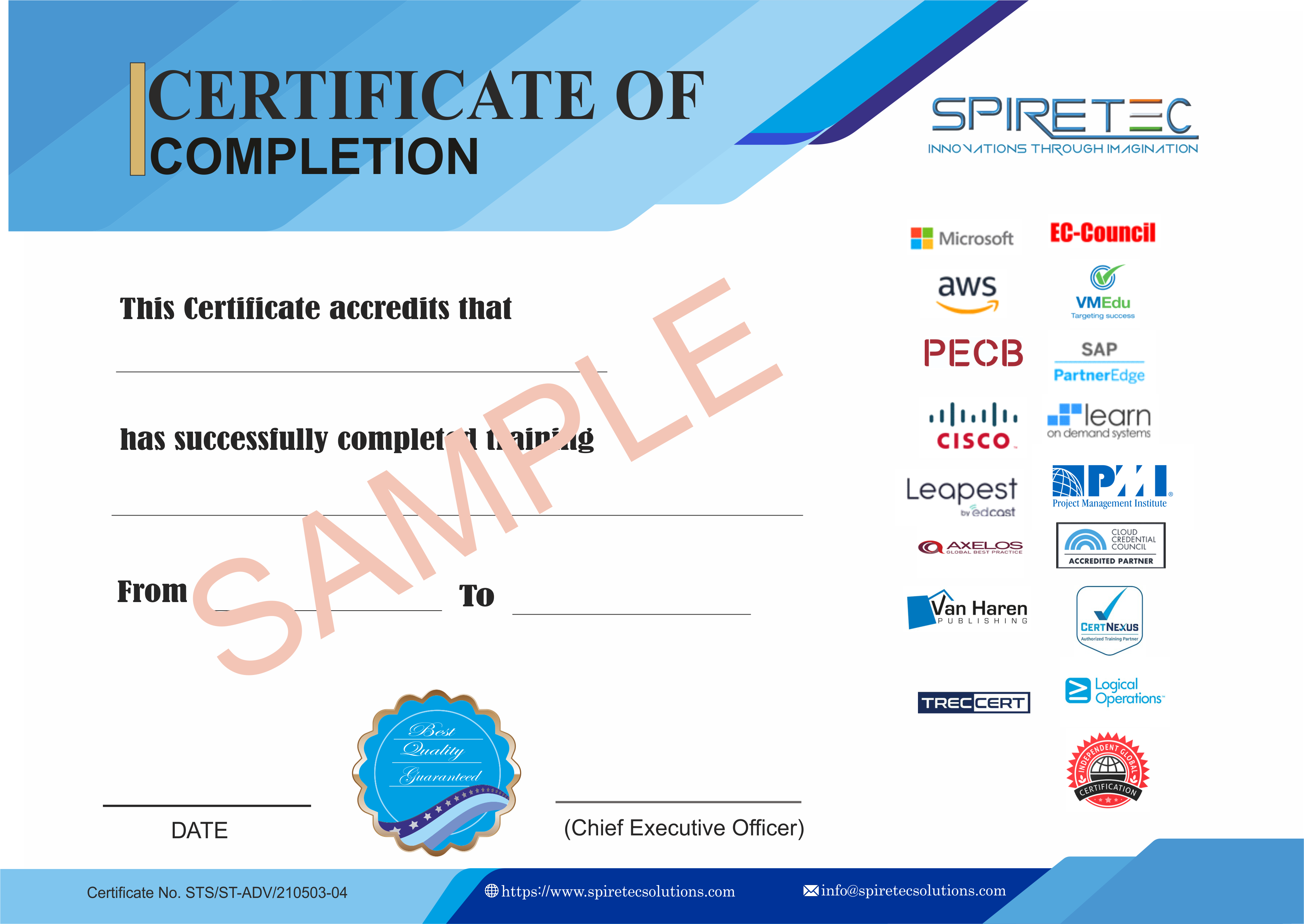The MSP Practitioner Examination is designed to assess whether a candidate can demonstrate sufficient ability to apply and tailor the MSP programme management framework (as described in the syllabus) to be awarded the MSP Practitioner qualification.
A successful Practitioner candidate should, with suitable direction, be able to begin applying the framework to a real programme but may not be sufficiently skilled to do this appropriately in all situations. Their individual programme management expertise, the complexity of the programme, and the support provided for using MSP in their work environment will all affect what the Practitioner can achieve.
Target Audience
The MSP (Managing Successful Programmes) Practitioner certification is designed for professionals who wish to apply the MSP framework to real-life scenarios. It is particularly valuable for:
-
Project Managers: Those who need to implement and utilize MSP methodologies in their project management roles.
-
Programme Managers: Professionals responsible for managing multiple interconnected projects and ensuring alignment with organizational objectives.
-
Business Change Managers: Individuals leading and managing change initiatives within large-scale programs.
This certification is crucial for both project and programme management professionals aiming to deliver significant organizational value and advance their careers.
For more information about the previous version of this certification, please visit our MSP Practitioner 4th Edition page.
Pre-Requisites
Before sitting for the MSP Practitioner exam, candidates must have passed the MSP Foundation exam.
Booking an Exam with Pre-Requisites: Ensure you hold verified proof of completion of the prerequisite (e.g., certificate or letter from AXELOS or a former Examination Institute confirming current certification). Examination results will be withheld until the prerequisite is verified by PeopleCert. If you cannot provide the required proof, you will need to pass the prerequisite exam before receiving your Practitioner exam results.
Exam Format
-
Question Type: Objective testing
-
Number of Questions: 70 question items per paper
-
Passing Marks: 42 marks required to pass (60% of total marks)
-
Duration: Two-and-a-half hours
-
Exam Conditions: Open book. Candidates may use the official printed hard copy of the Managing Successful Programmes 5th Edition manual. The manual may be annotated and tabulated, but sticky notes or loose-leaf papers with additional notes are not permitted.
Course Outline
1. Understand how to apply the MSP principles in context
1.1 Analyse the application of MSP principles in context:
2. Understand how to apply and tailor relevant aspects of the MSP themes in context
2.1 Assess
-
The component parts of the programme strategy
-
The component parts of the programme plans
-
How to apply the Plan-Do-Check-Act (PDCA) cycle
2.2 Organization theme
2.2.1 Apply the MSP requirements for the ‘organization’ theme, demonstrating an understanding of:
-
The key documents required to support the ‘organization’ theme:
-
Programme strategy: governance approach including organization structure
-
Programme strategy: stakeholder engagement approach
-
Stakeholder engagement and communications plan
-
The areas of focus for key roles associated with the ‘organization’ theme
-
The recommended programme management team structure
2.2.2 Analyse whether an approach to applying the ‘organization’ theme is effective and fit for purpose, taking into consideration the programme’s environment, the MSP principles, and the purpose and requirements of the theme
2.3 Design theme
2.3.1 Apply the MSP requirements for the ‘design’ theme, demonstrating an understanding of:
-
The key documents required to support the ‘design’ theme:
-
The areas of focus for key roles associated with the ‘design’ theme
-
The recommended approach to:
-
Types of benefits and the path to benefits
-
Types of programme risk and risk prioritization
-
Effectiveness of the target operating model and the gap between current and future states
2.3.2 Analyse whether an approach to applying the ‘design’ theme is effective and fit for purpose, taking into consideration the programme’s environment, the MSP principles, and the purpose and requirements of the theme
2.4 Justification theme
2.4.1 Apply the MSP requirements for the ‘justification’ theme, demonstrating an understanding of:
-
The key documents required to support the ‘justification’ theme:
-
The areas of focus for key roles associated with the ‘justification’ theme
-
The recommended approach to:
-
Financial and non-financial measures of benefits and disbenefits, including justifying the investment
-
Key considerations when validating a business case
-
Combined effects of risks
-
Financial planning including budgets, cash flow, tracking and forecasting, management of financial contingency, and reporting on variances
2.4.2 Analyse whether an approach to applying the ‘justification’ theme is effective and fit for purpose, taking into consideration the programme’s environment, the MSP principles, and the purpose and requirements of the theme
2.5 Structure theme
2.5.1 Apply the MSP requirements for the ‘structure’ theme, demonstrating an understanding of:
-
The key documents required to support the ‘structure’ theme:
-
Programme strategy: delivery approach
-
Delivery plan including resourcing, dependencies, transition, and benefits baseline
-
Benefits realization plan
-
Programme strategy: resourcing approach
-
The areas of focus for key roles associated with the ‘structure’ theme
-
The recommended approach to:
-
Establishing the appropriate pace
-
Delivery planning including incremental progression, landing points, and tranches
-
Multimodal delivery
-
Dependencies
-
Benefits realization planning
-
Procurement and supply chain management
2.5.2 Analyse whether an approach to applying the ‘structure’ theme is effective and fit for purpose, taking into consideration the programme’s environment, the MSP principles, and the purpose and requirements of the theme
2.6 Knowledge theme
2.6.1 Apply the MSP requirements for the ‘knowledge’ theme, demonstrating an understanding of:
-
The key documents required to support the ‘knowledge’ theme:
-
The areas of focus for key roles associated with the ‘knowledge’ theme
-
The recommended approach to:
2.6.2 Analyse whether an approach to applying the ‘knowledge’ theme is effective and fit for purpose, taking into consideration the programme’s environment, the MSP principles, and the purpose and requirements of the theme
2.7 Assurance theme
2.7.1 Apply the MSP requirements for the ‘assurance’ theme, demonstrating an understanding of:
-
The key documents required to support the ‘assurance’ theme:
-
The areas of focus for key roles associated with the ‘assurance’ theme
-
The recommended approach to:
-
Assurance at multiple levels
-
Assurance planning and activities
-
Timing and resourcing of assurance activity
-
How to plan successful assurance activities
2.7.2 Analyse whether an approach to applying the ‘assurance’ theme is effective and fit for purpose, taking into consideration the programme’s environment, the MSP principles, and the purpose and requirements of the theme
2.8 Decisions theme
2.8.1 Apply the MSP requirements for the ‘decisions’ theme, demonstrating an understanding of:
-
The key documents required to support the ‘decisions’ theme:
-
Programme strategy: decision-making approach
-
Programme strategy: issue resolution approach
-
Programme strategy: risk response approach
-
Decision register
-
Issue register
-
The areas of focus for key roles associated with the ‘decisions’ theme
-
The recommended approach to:
-
Determining appropriate decision points and layers of decision-making
-
Resolving issues
-
Responding to risks, including threats and opportunities
-
Data-gathering and reporting
-
Options analysis
2.8.2 Analyse whether an approach to applying the ‘decisions’ theme is effective and fit for purpose, taking into consideration the programme’s environment, the MSP principles, and the purpose and requirements of the theme
3. Understand how to apply and tailor relevant aspects of the MSP processes in context
3.1.1 Carry out the ‘identify the programme’ process, demonstrating an understanding of:
-
The activities, inputs, and outputs
-
The recommended roles and responsibilities within the process
-
How the themes may be applied
3.1.2 Analyse whether the ‘identify the programme’ process activities, roles, and responsibilities are effective and fit for purpose, taking into consideration the programme’s environment, the MSP principles, the themes, and the purpose and objectives of the process
3.2.1 Carry out the ‘design the outcomes’ process, demonstrating an understanding of:
-
The activities, inputs, and outputs
-
The recommended roles and responsibilities within the process
-
How the themes may be applied
3.2.2 Analyse whether the ‘design the outcomes’ process activities, roles, and responsibilities are effective and fit for purpose, taking into consideration the programme’s environment, the MSP principles, the themes, and the purpose and objectives of the process
3.3.1 Carry out the ‘plan progressive delivery’ process, demonstrating an understanding of:
-
The activities, inputs, and outputs
-
The recommended roles and responsibilities within the process
-
How the themes may be applied
3.3.2 Analyse whether the ‘plan progressive delivery’ process activities, roles, and responsibilities are effective and fit for purpose, taking into consideration the programme’s environment, the MSP principles, the themes, and the purpose and objectives of the process
3.4.1 Carry out the ‘deliver the capabilities’ process, demonstrating an understanding of:
-
The activities, inputs, and outputs
-
The recommended roles and responsibilities within the process
-
How the themes may be applied
3.4.2 Analyse whether the ‘deliver the capabilities’ process activities, roles, and responsibilities are effective and fit for purpose, taking into consideration the programme’s environment, the MSP principles, the themes, and the purpose and objectives of the process
3.5.1 Carry out the ‘embed the outcomes’ process, demonstrating an understanding of:
-
The activities, inputs, and outputs
-
The recommended roles and responsibilities within the process
-
How the themes may be applied
3.5.2 Analyse whether the ‘embed the outcomes’ process activities, roles, and responsibilities are effective and fit for purpose, taking into consideration the programme’s environment, the MSP principles, the themes, and the purpose and objectives of the process
3.6.1 Carry out the ‘evaluate new information’ process, demonstrating an understanding of:
-
The activities, inputs, and outputs
-
The recommended roles and responsibilities within the process
-
How the themes may be applied
3.6.2 Analyse whether the ‘evaluate new information’ process activities, roles, and responsibilities are effective and fit for purpose, taking into consideration the programme’s environment, the MSP principles, the themes, and the purpose and objectives of the process
3.7.1 Carry out the ‘close the programme’ process, demonstrating an understanding of:
-
The activities, inputs, and outputs
-
The recommended roles and responsibilities within the process
-
How the themes may be applied
3.7.2 Analyse whether the ‘close the programme’ process activities, roles, and responsibilities are effective and fit for purpose, taking into consideration the programme’s environment, the MSP principles, the themes, and the purpose and objectives of the process







 Live Online Training (Duration : 16 Hours)
Live Online Training (Duration : 16 Hours)
